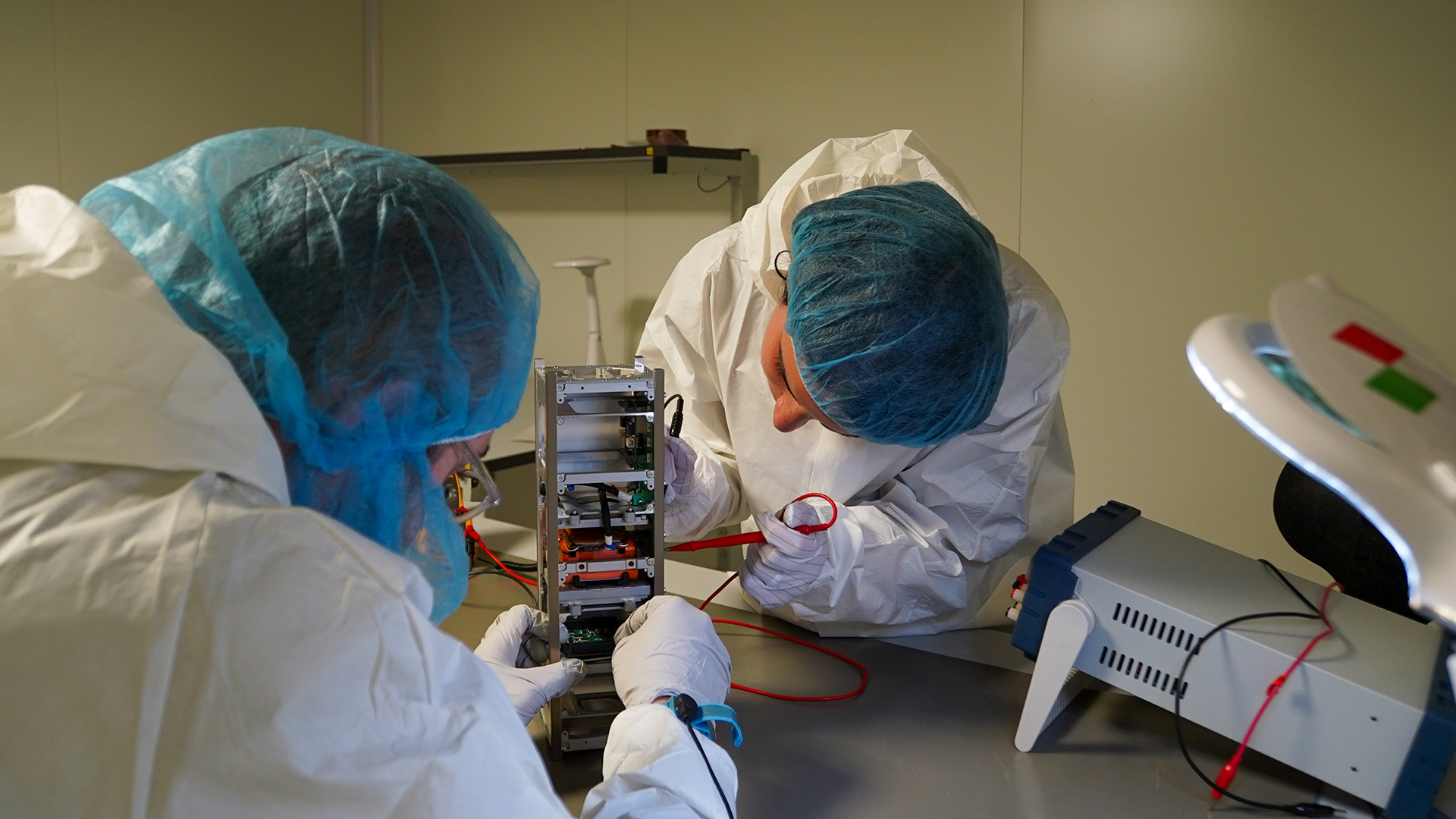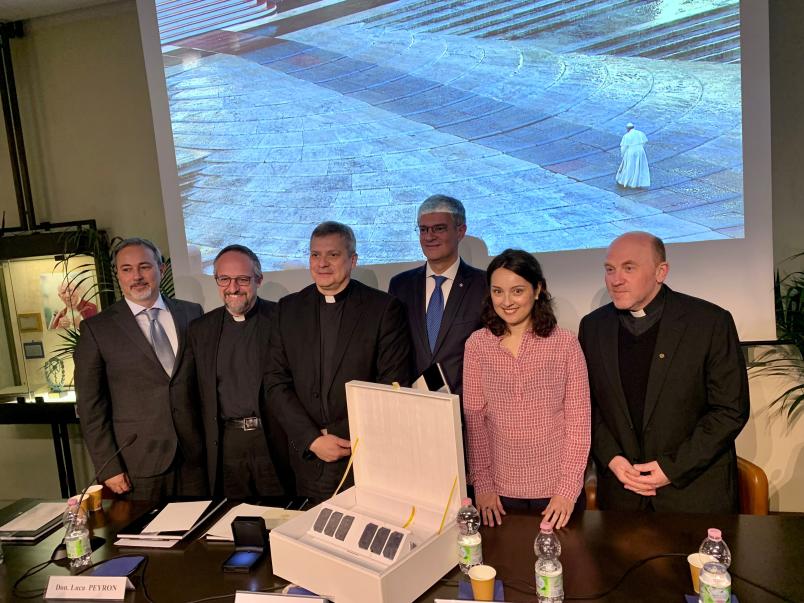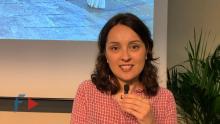
Spei Satelles: a message of hope for humankind

The “Spei Satelles” project was presented today in Rome: a CubeSat built by Politecnico di Torino and operated by the Italian Space Agency will be launched into orbit with a message of hope and peace enshrined in a nanobook built by by the National Research Council.
The initiative, promoted by the Holy See's Dicastery for Communication, ties in with the Pope's message of 27 March 2020, delivered at the Statio Orbis in St. Peter's Square. That moment of prayer represents a sign of hope that will continue its journey to call the people of the planet to action. To embody this shared commitment, walking together with the Pope, anyone who so desires can join the journey of "Spei Satelles" and become a bearer of hope and peace by registering their name at www.speisatelles.org. On Wednesday, 29 May, at the end of the General Audience, the Holy Father will bless the satellite and the nanobook before it undergoes the final technical checks before launch.
The Italian Space Agency and Politecnico di Torino have been working in close synergy to launch this micro-artifact as a sign and prophecy of hope. The team led by Professor Sabrina Corpino designed and built in record time the CubeSat 3U SpeiSat, which would house and safeguard the nanobook. The Italian Space Agency, led by Giorgio Saccoccia, coordinated the project in order to launch the CubeSat and put it into Low Earth Orbit (LEO) at an altitude of about 525 km.
Being the 3rd anniversary of the Statio Orbis and the 10th anniversary of Pope Francis’ Pontificate, the Dicastery for Communication worked with various people and organizations to launch a renewed sign of hope, starting from that first seed. This is how the "Spei Satelles” space mission project was born, coordinated by the Secretary of the Dicastery, Msgr. Lucio Adrian Ruiz, involving the National Research Council (CNR), the Italian Space Agency (ASI), Politecnico di Torino, the Instituto para el Diálogo Global y la Cultura del Encuentro – IDGCE, the Salesian University Institute Venice – IUSVE, and the Digital Apostolate of the Archdiocese of Turin. The nanobook hosts the Pope's book – Why Are You Afraid? Have You No Faith? – which carries the Statio Orbis message. Thanks to the National Research Council, and in particular to the work of the Institute of Photonics and Nanotechnology coordinated by Dr. Andrea Notargiacomo, the book was engraved into a highly miniaturized silicon plate using micro- and nano-fabrication technologies.
Technical and communication aspects have been combined with technology and storytelling thanks to the coordination of the Digital Apostolate of the Archdiocese of Turin, led by Msgr. Luca Peyron.
"The Spei Satelles program, with the design and construction of the satellite and the resulting mission control, represents an extraordinary opportunity for our university, and especially for our students and researchers led by Professor Sabrina Corpino” – stated Politecnico’s Rector Guido Saracco – “Our young team was able to face a technical and scientific challenge that was quite complex in terms of human and cultural values. Thanks to this project, the message embraced and re-launched by Politecnico is that science and technology can and should collaborate to bear a message of hope and peace to the whole world. We all remember 27 March 2020, and what we were experiencing at that time. Our young team built a technological artifact that, starting from that iconic moment, will speak to the world and allow all of us to stand for universal hope and fraternity together with Pope Francis."
“Spei Satelles perfectly embodies the realization of each University’s mission" – emphasized Professor Sabrina Corpino – “as it is also showed by Politecnico’s Strategic Plan pillars: train our students to deal with their professional future, generate and share the knowledge produced in our laboratories, and produce a clear economic and cultural impact on society. For what concerns the program development, after adapting the platform to the Spei Satelles mission, we finalized the satellite also thanks to the Italian industrial chain, a leading force in the aerospace field. We are now in the final test phase, before the shipment towards US scheduled for early may. We will then proceed wit the integration on the launcher and wait for the final launch in June, being at that point involved in the orbit operations supervised by our students together with all the radio amateurs and passionate people interested taking part to the project. I express my gratitude to the Holy See and the Italian Space Agency for involving us in this project, and I also thank my wonderful students for daily reminding me that future is full of hope to be shared”.
